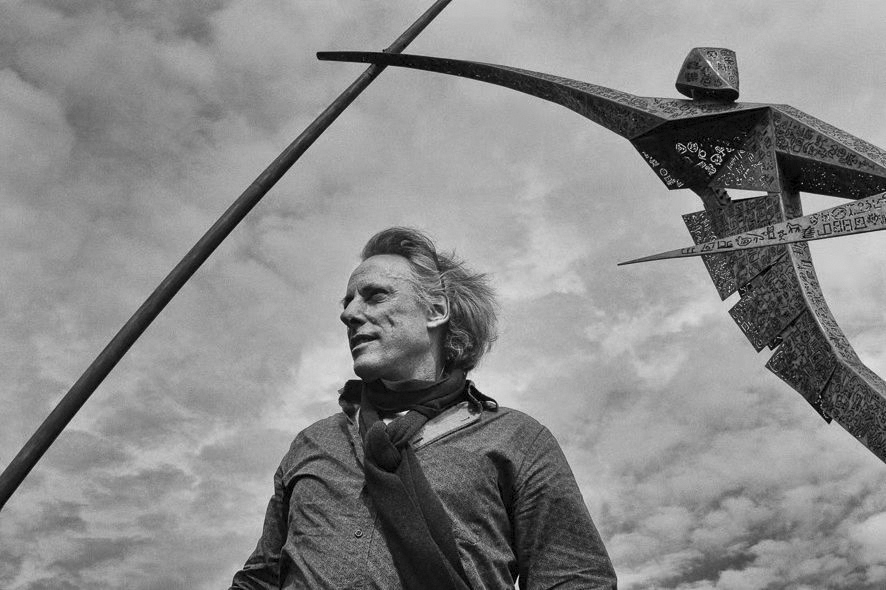旨在建立一个健康和谐的环境。蜂巢象征着几十年来因污染而遭受苦难的老村庄。随着滇池的大清理,它将回归以古村落为象征的蜂蜜般甜美环境。雕塑中的蜜蜂代表了所有参与其中的人,他们为这一巨大的行动付出了巨大的努力。
The artwork "Bees and Honeycombs" refers to the idea of building a healthy and coherent environment. Kunming is striving to build such a community. Honeycombs symbolize the old villages which suffered for tens of years under the causes of pollution. With the big cleanup of Dianchi Lake, establishing a healthy and clean environment, Kunming brings back the symbolic honey to become the sweetest environment represented by those ancient villages. The bees of the sculpture represent all the various people involved who put strong efforts into this enormous operation, which already shows effects in many aspects. Hans Mes' artwork visualizes the people of Kunming who act, much like bees, in close cooperation to make Dianchi Lake a nationwide and international attractive scenic spot with a bright future.

Hans Mes生于1950年,出生地为荷兰Utrecht, 1973-1979 进修于Groningen, Minerva Academy Of Arts,毕业后获得雕塑设计和纪念碑设计双学位。他的作品除了包含了纪念碑的大型雕塑项目外,还包括了一些小的雕塑、浮雕、肖像和纪念章的创作。
Hans 通常从收集与雕塑地点有关地信息开始他的创意。之后他会把用数码科技模拟好的作品附加在放置地点的图片上。这样他可以从不同的角度去观察地点周边环境和其作品地塔配性,除去塔配性,融合性和空间性同时也是他考察作品的表现力的标准之一。
在这些程序之后,Hans才会考虑用料以及技术。用料和技术都必须最好地描述作品地精要。又此设计方法导致,除青铜和石头之外,他还使用水,铁,木和黄铜。Hans的工作室适应于许多不同地技术和工艺的创作,其中包括一个黄铜铸造间。在此工作室中,他全职忙于世界各地所向定做的艺术作品,而他的这些作品可谓隐性视觉艺术的标志。
Hans Mes (born in Utrecht, 1950) studied at the Groningen Academy of Arts ('Minerva') from 1973 to 1979, where he graduated in two disciplines: sculpting and monumental design. His work comprises not just monumental projects, but also small sculptures, relief’s, portraits and medals.
On top of this, he writes poems and paints watercolours. Hans Mes starts his design process by gathering all the information he feels is relevant to the place where the sculpture is to be placed. He captures the intended location and digitally projects the sculpture onto the images of this location. This allows him to view the sculpture in its specific surroundings from all angles. He also assesses the expressiveness of intrinsic and spatial aspects.
Only then does he determine which materials and techniques will best capture the essence of the design. Because of this approach, he does not only make bronze and/or stone sculptures but he also uses copper, wood, steel and water. His workshop is geared to a lot of different techniques and includes a bronze foundry; here he works full time on commissioned works of art worldwide. By carrying out each work of art personally, Mes emphasises that technical shaping the properties of materials involved is the sculptor’s spatial handwriting to create meaning by sculpture. Hans Mes himself characterizes his art as visible symbols of things invisible.